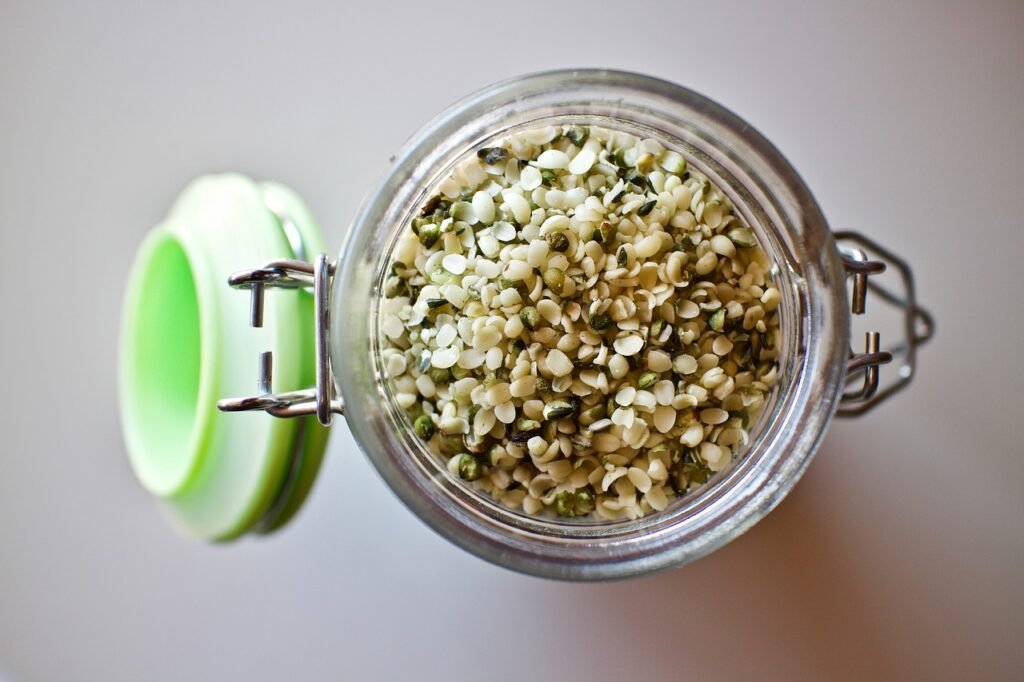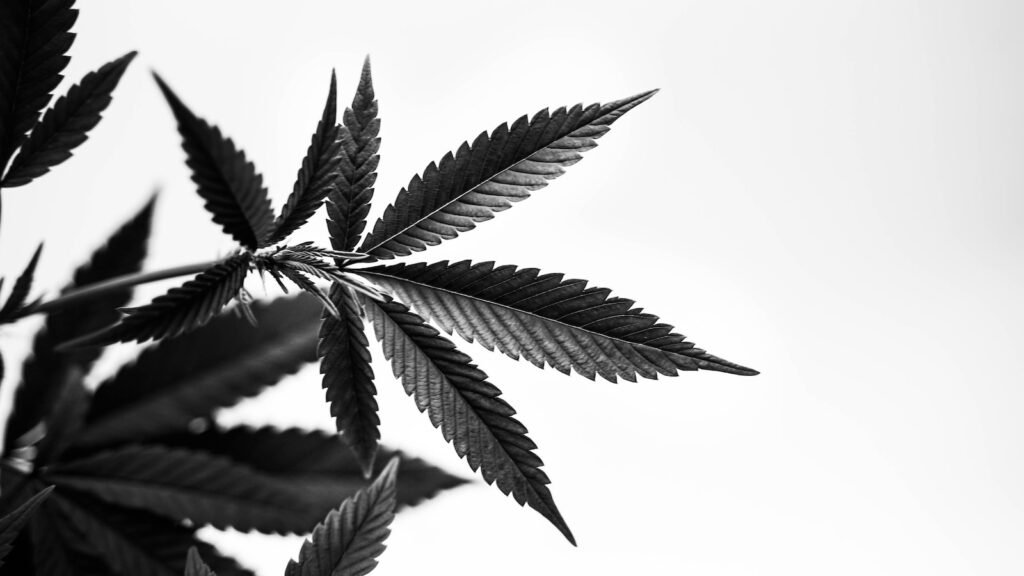Hemp is a versatile plant that has been used for thousands of years for various purposes. Hemp products are made from the stalks, seeds, leaves, and flowers of the hemp plant, which is a variety of Cannabis sativa. Hemp products can be classified into four main categories: food, fibre, oil, and wellness.
Hemp food products are derived from the seeds of the hemp plant, which are rich in protein, fibre, omega-3 and omega-6 fatty acids, and antioxidants. Hemp seeds can be eaten raw, roasted, or ground into flour or butter. Hemp seeds can also be pressed to produce hemp milk, which is a dairy-free alternative to cow’s milk. Hemp seeds can also be used to make hemp protein powder, which is a vegan-friendly source of complete protein that contains all nine essential amino acids. Some examples of hemp food products are hemp bars, hemp granola, hemp oil, hemp cheese, and hemp chocolate.
Hemp fibre products are made from the bast fibres of the hemp stalks, which are strong and durable and can be spun into yarn or woven into fabric. Hemp fibre is environmentally friendly, as it requires less water and pesticides than cotton and is biodegradable. Hemp fibre can be used to make clothing, shoes, bags, hats, carpets, curtains, and more. Hemp fibre can also be blended with other natural or synthetic fibres to create different textures and qualities. Some examples of hemp fibre products are hemp shirts, hemp jeans, hemp shoes, hemp backpacks, and hemp towels.
Hemp is not nutritious for humans, but it also supports regenerative farming practices by improving soil fertility, a hardy plant it requires a lot less fertilizer and water than other crops. This hardiness means that Hemp can be grown anywhere making it a legal cash producing crop including in third world countries where water and fertilizer considerations are important factors. It is also deep rooted, which means it aids in crop rotation by creating a friable loose soil, and it also aids in erosion.
Hemp oil products are extracted from the leaves and flowers of the hemp plant, which contain various phytochemicals that have potential health benefits. Hemp oil products are also known as CBD products, as they contain cannabidiol (CBD), which is one of the main active compounds in hemp. CBD is not psychoactive, meaning it does not cause a high like tetrahydrocannabinol (THC), which is another compound found in cannabis. CBD has been shown to have anti-inflammatory, anti-anxiety, anti-seizure, and neuroprotective effects in some studies. Hemp oil products can be consumed orally as drops, capsules, gummies, or beverages, or applied topically as creams, balms, or salves. Some examples of hemp oil products are hemp gummies², hemp capsules, hemp cream, hemp balm, and hemp tea.
Hemp wellness products are designed to promote general well-being and relaxation by using various parts of the hemp plant. Hemp wellness products can include aromatherapy products, such as candles, diffusers, or sprays that use hemp essential oil to create a soothing scent. Hemp wellness products can also include personal care products, such as soap, shampoo, conditioner, lotion, or deodorant that use hemp seed oil or hemp extract oil to nourish and moisturize the skin and hair. Some examples of hemp wellness products are hemp soap, hemp shampoo, hemp lotion, hemp deodorant, and hemp candles.
As you can see, hemp is a remarkable plant that can be used to make a wide range of products that are beneficial for humans and the environment. Hemp products are becoming more popular and accessible in different countries as the laws and regulations around hemp cultivation and consumption are changing.

Hemp products have many benefits for humans and the environment, such as:
– Hemp products are nutritious and delicious. Hemp seeds, oil, and protein are rich in protein, fiber, omega-3 and omega-6 fatty acids, and antioxidants. Hemp seeds can be eaten raw, roasted, or ground into flour or butter. Hemp oil can be used as a salad dressing, a cooking oil, or a supplement. Hemp protein can be added to smoothies, shakes, or baked goods. Hemp products can help lower cholesterol, blood pressure, and inflammation, and improve heart health and digestion.
– Hemp products are eco-friendly and sustainable. Hemp is a fast-growing plant that requires less water, land, and pesticides than other crops. Hemp can also absorb more carbon dioxide per hectare than most trees and other plants. Hemp can be used to make biodegradable products such as paper, plastic, and biofuel. Hemp can also be used to make clothing, shoes, bags, and other textiles that are durable, breathable, and comfortable.
– Hemp products are beneficial for the skin and hair. Hemp oil and extract contain various phytochemicals that have potential health benefits for the skin and hair. Hemp oil and extract can moisturize, nourish, soothe, and protect the skin and hair from dryness, irritation, inflammation, and aging. Hemp oil and extract can also be used to make personal care products such as soap, shampoo, conditioner, lotion, deodorant, and more.

Hemp as a potential Fuel
Biodiesel is a type of fuel that is made from organic materials, such as vegetable oils or animal fats. Biodiesel can be used in diesel engines without any modifications, or blended with petroleum diesel to reduce emissions and improve performance. Biodiesel is biodegradable, non-toxic, and reduces greenhouse gas emissions by up to 80% compared to petroleum diesel.
Hemp oil is one of the potential sources of biodiesel. Hemp oil is extracted from the seeds of the hemp plant, which are rich in protein, fiber, omega-3 and omega-6 fatty acids, and antioxidants. Hemp oil can be used as a cooking oil, a salad dressing, a supplement, or a personal care product. Hemp oil can also be transformed into biodiesel through a process called transesterification.
Transesterification is a chemical reaction that converts oil into biodiesel and glycerin. The process involves mixing oil with methanol (a type of alcohol) and lye (a type of alkali) in a container. The mixture is then heated and stirred for about an hour until it separates into two layers: the top layer is biodiesel and the bottom layer is glycerin. The biodiesel is then washed and filtered to remove any impurities and excess methanol. The glycerin can be used for making soap or other products.
Hemp oil has several advantages as a biodiesel feedstock. Hemp oil has a low free fatty acid content, which means it requires less lye and methanol for transesterification. Hemp oil also has a high cetane number, which means it ignites easily and burns smoothly in diesel engines. Hemp oil also has a low cloud point, which means it remains liquid at low temperatures and does not clog fuel filters.
Hemp oil also has environmental and economic benefits as a biodiesel feedstock. Hemp is a fast-growing plant that requires less water, land, and pesticides than other crops. Hemp can also absorb more carbon dioxide per hectare than most trees and other plants. Hemp can produce more than 800 liters of biodiesel per hectare per year, which is a greater yield than crops such as soybean, sunflower, peanut, or rapeseed. Hemp can also create jobs and income for farmers and rural communities.
Hemp biodiesel is not a new concept. In fact, the first diesel engine was designed to run on vegetable oils, including hemp oil. Rudolph Diesel, the inventor of the diesel engine, believed that vegetable fuels were superior to petroleum fuels. Henry Ford, the founder of the Ford Motor Company, also envisioned a future where biomass fuels would power vehicles and industries. Ford operated a biomass conversion plant that used hemp and other plants to produce methanol, charcoal fuel, tar, pitch, ethyl-acetate, and creosote.
However, hemp biodiesel is not widely available or used today. This is mainly due to legal and regulatory barriers that restrict the cultivation and processing of hemp in many countries and regions. Hemp is often confused with marijuana and subject to strict laws and regulations that limit its production and use. Hemp biodiesel also faces competition from other biofuels and fossil fuels that have more established markets and infrastructures.
Despite these challenges, hemp biodiesel has great potential as a sustainable and renewable fuel for the future. Hemp biodiesel can help reduce our dependence on fossil fuels and mitigate the effects of climate change. Hemp biodiesel can also create new opportunities for farmers and industries that use hemp as a raw material. Hemp biodiesel can be part of the solution for a greener and cleaner world.

Hemp vs Marijuana
Hemp and marijuana are both varieties of the cannabis plant, but they have different characteristics and legal status. The main difference between hemp and marijuana is the amount of THC, the psychoactive compound that makes people feel high, that they contain. Hemp has 0.3% or less THC by dry weight, while marijuana has more than 0.3% THC. This means that hemp cannot get you high, while marijuana can.
Hemp and marijuana also have different uses and applications. Hemp is mainly used for industrial and commercial purposes, such as making fiber, paper, clothing, food, oil, and wellness products. Marijuana is mainly used for medical and recreational purposes, such as treating various conditions and producing a euphoric effect.
Hemp and marijuana also have different legal status in different countries and regions. In the United States, hemp was legalized at the federal level in 2018, while marijuana remains illegal under federal law but legal in some states. In Australia, hemp is legal to grow and use for certain purposes, such as food and cosmetics, while marijuana is illegal to possess and use except for medical reasons in some states.
As you can see, hemp and marijuana are not the same thing, even though they belong to the same plant species. They have different chemical compositions, uses, and legalities.
Marijuana medical uses
Marijuana is a plant that contains various compounds called cannabinoids, which can have different effects on the body and mind. Some of these cannabinoids, such as cannabidiol (CBD) and tetrahydrocannabinol (THC), have been studied for their potential medical uses. According to some medical research results, marijuana or its cannabinoids may be helpful in treating the following conditions:
– Chronic pain: Marijuana may reduce pain by altering pain perception pathways in the brain. This may be useful for conditions that cause chronic pain, such as arthritis, fibromyalgia, endometriosis, migraine, and cancer.
– Nausea and vomiting: Marijuana may help prevent or reduce nausea and vomiting caused by chemotherapy or other treatments. This may improve appetite and weight loss in people with cancer or HIV/AIDS.
– Epilepsy: Marijuana may help reduce the frequency and severity of seizures in some people with epilepsy, especially children with rare forms of the disorder. CBD is the main cannabinoid used for this purpose.
– Multiple sclerosis: Marijuana may help relieve muscle spasms, pain, and inflammation associated with multiple sclerosis. THC and CBD are the main cannabinoids used for this purpose.
– Anxiety: Marijuana may help reduce anxiety and stress in some people. CBD is the main cannabinoid used for this purpose.
– Insomnia: Marijuana may help improve sleep quality and duration in some people. THC is the main cannabinoid used for this purpose.
However, marijuana also has some risks and side effects, such as:
– Impaired concentration, memory, and thinking
– Dizziness, drowsiness, and balance problems
– Increased heart rate and blood pressure
– Dry mouth and red eyes
– Paranoia, hallucinations, and psychosis
– Dependence and withdrawal symptom
